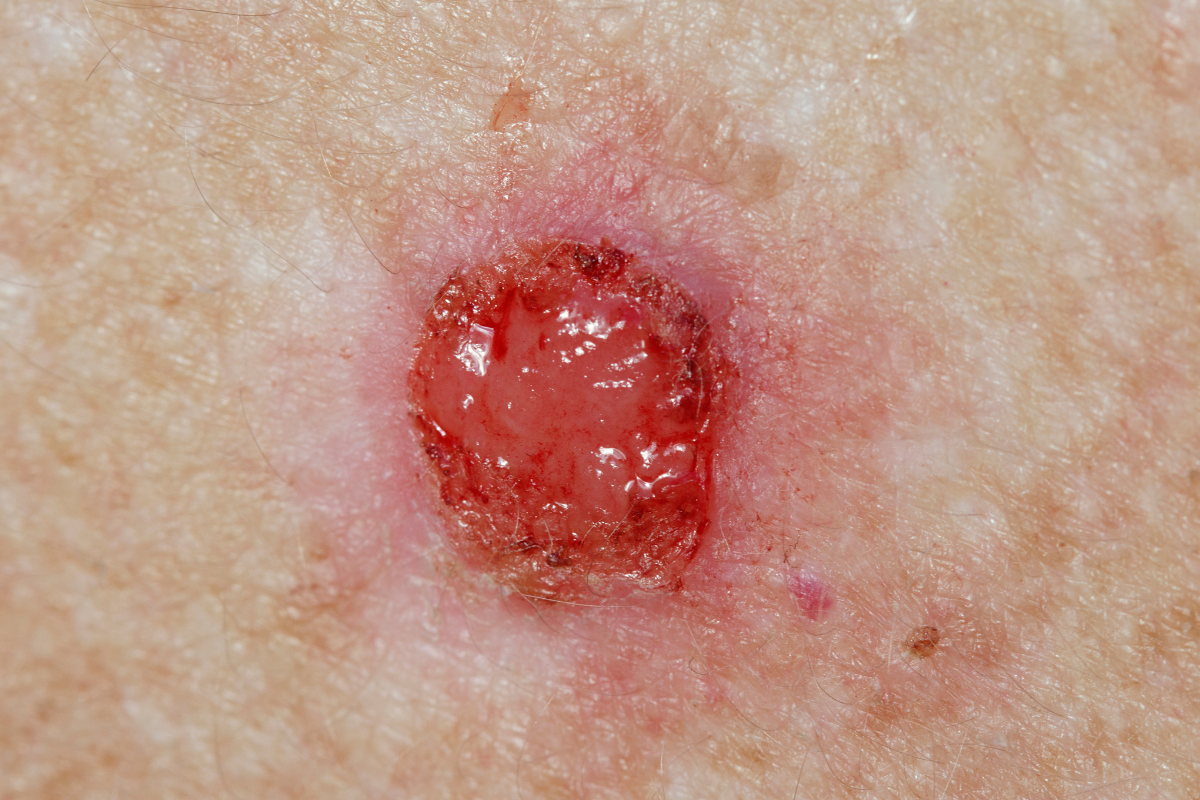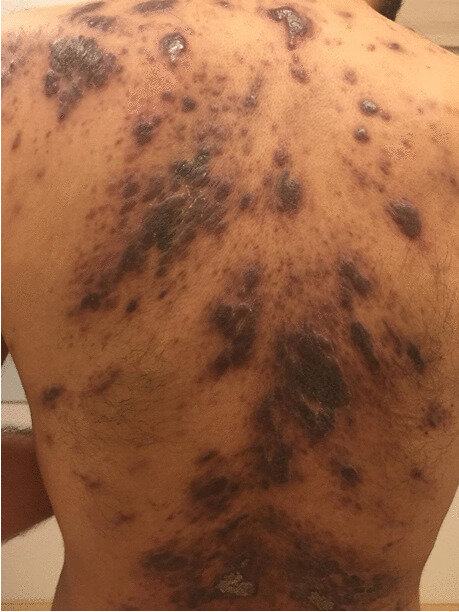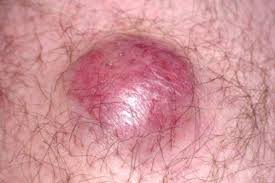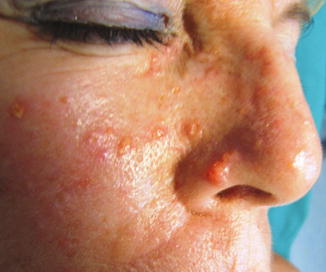Posted On : Oct 01 , 2024
Posted By : CureSureMedico Team
Skin cancer is currently the most prevalent type of cancer in the world. It continues to worsen each year. It is a disease caused by an abnormal growth produced by excessive exposure to the sun's ultraviolet radiation. It then manifests some changes to the skin, which include new moles, bumps, or lesions. Fortunately, most skin cancers are curable when they are early-detected. The treatment options for skin cancer range from the least invasive procedures, like cryotherapy, to the more involved chemotherapy and radiation therapy.
Skin Cancer Types
Skin cancer can be primarily characterized by various types of skin cells involved. Skin cancers are mainly prevalent with the following three types:

Basal Cell Carcinoma: This is a kind of tumour that originates from basal cells—the deepest epidermis layer. It is the most common yet least aggressive form of skin cancer, as it hardly spreads to other body parts.

SCC: It originates from the squamous cells. It is more aggressive as compared to basal cell carcinoma and will invade adjacent tissues if left untreated. Most of these usually appear on sun-exposed parts of the body, like the face, ears, neck, and hands.

Melanoma: This is the most dangerous form of skin cancer. Melanoma begins among melanocytes, the cells responsible for the production of melanin—a skin pigment which imparts colour to the skin. Melanoma may metastasize or spread all over the body, including the lymph nodes and distant organs.
Other rare forms include:

Kaposi Sarcoma: Most of the time, this is due to problems in the immune system. It's a type of cancer that originates in the blood vessels of your skin and creates lesions; most of those are purple.

Merkel Cell Carcinoma: It is a rather rare but aggressive skin cancer type appearing in the neuroendocrine cells of your skin. It too can spread to other body parts.

Sebaceous Gland Carcinoma: This is born in the oil glands of the skin. This is a very rare type; however, it is very aggressive.
Symptoms and Warning Signs
The most identifiable sign of skin cancer is a visible change in the skin; it may be a new growth or changes being made to an already existing mole. The warning signs of a person must be on the lookout for include:
- A new mole, or a mole that has changed in size, shape or colour.
- A pearly or waxy bump, often having a blue-black speck in the centre of the bump; mainly occurring on the face, neck and ears.
- A new red or brown patch or lesion that appears flat, and looks rough or scaly.
- Areas of skin that look like scars.
- Sores that will not heal, or those that heal and return.
- Lesions that sting, itch or bleed easily.
The ABCDE Rule may help identify suspicious moles:
- A = Asymmetry: The two halves of the mole do not match.
- B = Border: The edges are irregular or blurred.
- C = Color: The mole has more than one colour or shade.
- Diameter: The mole is larger than 6 millimetres in diameter (about the size of a pencil eraser).
- Evolution: The mole has grown in size, shape or colour over time, or new symptoms have appeared such as bleeding or itching.
If any of these signs appear, be sure to see a dermatologist—and importantly—for an evaluation as soon as possible.
Causes and Risk Factors
The most common cause of skin cancers is excessive exposure to UV radiation from the sun or from man-made sources, which supply UV through fluorescent lights. Whenever UV light reaches the skin, it may cause damage to the DNA of skin cells and result in skin cancer. Skin cancers share the following general risk factors:
- Skin Color: The chances are higher for fair-skinned, blond-haired, or red-haired people and for those with light-coloured eyes as they have less melanin.
- Sun Exposure: Generally, the longer the time of exposure to the sun without protection, the greater the risk of developing skin cancer.
- History of Sunburn: The risk of the development of skin cancers later in life is related to the severity of a sunburn.
- Tanning Bed Use: Tanning beds are exposed to extremely great amounts of UV radiation. These can increase the risk for the development of all types of skin cancer.
- Weakened Immune System: Individuals who have a weakened immune system, such as organ transplant patients or patients who are taking immunosuppressive drugs are more susceptible to this form of cancer.
- History of Skin Cancer: A person who has had skin cancer earlier or one of their immediate family members suffers from the same malady, is at greater risk of acquiring the disease.
Diagnosis and Staging
It is said that the earlier it is detected, the better it can be treated. Dermatologists make early skin examinations to search for any alteration in the size, shape, colour, or texture of a mole or other skin lesion. If suspicion arises, a biopsy should be done in which skin will be sampled for microscopic examination.
Skin cancer staging runs from Stage 0 to Stage IV depending on the severity:
- Stage 0: The cancer is confined to the very top layer of the skin—in situ.
- Stage I: Cancerous changes completely confined to the skin but may be involved with deeper layers.
- Stage II: The tumour is now a bit large and can affect the nearby tissues.
- Stage III: Cancer spreads into nearby lymph nodes.
- Stage IV: The cancer has spread to distant organs or tissues of the body.
Staging helps in defining the appropriate options of treatment and the prognosis for a patient.
Treatment Options
The treatment of skin cancer modalities is primarily based on the type of skin cancer, its size, location, and the stage of the cancer. The following are the most common modes of treatment:
- Cryotherapy: This is when the abnormal tissue is frozen, usually with liquid nitrogen, so it dies.
- Surgical Excision: This would involve surgical removal of the cancerous tissue along with some amount of surrounding healthy tissue.
- Mohs Surgery: A kind of surgical treatment that examines the skin in thin layers one after the other until the complete removal of the cancerous cells is achieved. It is, therefore, more applicable for sensitive areas such as the face or the hands.
- Chemotherapy: Treatment with chemotherapy, either topical or systemic, may be prescribed if the cancer has spread beyond the skin.
- Radiation Treatment: High-energy rays attack and kill cancer cells and are usually applied to the more serious cases or when surgical removal is impossible.
- Immunotherapy: This is a relatively new mode of treatment in which medication is used to boost one's immune response to fight cancerous cells.
Complications and Side Effects
Although most skin cancers are usually treatable when diagnosed early, there are complications, depending on the form of treatment administered. These include:
- Scarring following a surgical procedure.
- Nerve damage, especially when cancers take place near sensitive areas, such as the face.
- Infections in the area where the surgery is taking place.
- Cancer returning after being treated.
- Side effects, such as nausea, hair loss, and fatigue, from chemotherapy or radiation.
Prevention
Fortunately, much of skin cancer is preventable. To lower your risk, the following might help:
- Limit Sun Exposure: Whenever possible, stay out of the sun between 10 a.m. and 4 p.m.
- Use Sunscreen: Use broad-spectrum sunscreen with an SPF of 30 or higher every day, even on cloudy days.
- Protective Clothing: A wide-brimmed hat, sunglasses, and clothes with UV protection protect skin.
- Avoid Tanning Beds: The application of artificial UV light greatly increases your risk for skin cancer.
- Skin Self-examination: Check yourself often; consult with a dermatologist once yearly.
Outlook and Prognosis
Generally, the prognosis for those diagnosed with skin cancer is extremely favorable, provided it is found early. Most nonmelanoma skin cancers are curable, especially if their treatments are instituted before they have had a chance to spread. Melanoma is another story since this form of skin cancer is rather virulent and its prognosis is directly related to its early recognition and intervention.
The five-year survival rate in melanoma is as follows:
- 99% when it is detected at an early stage before dissemination.
- 66% if it has already disseminated to lymph nodes locally.
- 27% in the case of far-off dissemination of the tumour.
Conclusion
Skin cancer is a dangerous yet preventable disease to a great extent. Its prevention is possible to some extent, primarily by early detection and proper sun protection along with regular skin checks. On noticing any suspicious change in the skin, it becomes binding upon one that the doctor is consulted forthwith. Treating it as early as possible can give the best chance of recovery to the majority of patients with skin cancer.
